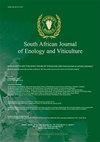葡萄温度对CAP方法经典葡萄酒感官感知的影响
IF 1.1
4区 农林科学
Q4 FOOD SCIENCE & TECHNOLOGY
引用次数: 3
摘要
南非瓶装发酵起泡酒经典法(MCC)的生产工艺遵循传统的法国方法(香槟法),尽管每个酒窖都有自己独特的添加方法。南非酿酒师使用不同的技术和混合物来制作他们屡获殊荣的MCC,但对这些葡萄酒背后的科学研究并不多。该项目是关于MCC的首批科学研究之一。MCC葡萄酒使用来自两个地区(Robertson和Darling)的霞多丽和黑皮诺葡萄酿造,这些葡萄在两个年份(2014年和2015年)收获,并在加工前储存在0°C、10°C、25°C和30°C。本研究旨在探讨葡萄贮藏温度对MCC感官特性的影响。对最后九个月大的MCC的香气和味道进行了评估,并对每个区域进行了单独分析。这项研究显示,根据两种年份的温度处理,对MCC进行了分组。在引用的属性和引用频率方面存在年份差异。根据引用频率,2014年由储存在0°C和10°C的葡萄制成的MCC被法官描述为具有水果、新鲜和清脆的香气,而由储存在25°C和30°C的葡萄酒制成的MCC则被描述为具有氧化的水果、挥发性酸度和溶剂状香气。评委们认为2015年MCC的香气中氧化和挥发性酸度(VA)较少(就引用频率而言),尽管与低温处理相比,高温处理仍然与不太理想的特性有关。这项研究表明,葡萄加工时的温度对陈化9个月的MCC的香气有显著影响,而对味道的影响不大。本文章由计算机程序翻译,如有差异,请以英文原文为准。
The Effect of Grape Temperature on the Sensory Perception of Méthode Cap Classique Wines
The production process of South African bottle-fermented sparkling wine, the Methode Cap Classique (MCC), follows the traditional French method (methode champenoise), although each cellar has its own unique additions to the method. South African winemakers use different techniques and blends to achieve their award-winning MCCs, but there have not been many scientific investigations of the science behind these wines. This project is one of the first scientific studies on MCC. MCC wines were made using Chardonnay and Pinot Noir grapes harvested over two vintages (2014 and 2015) from two regions (Robertson and Darling) and stored at 0°C, 10°C, 25°C and 30°C before processing. The study was aimed at investigating the effect of grape storage temperature on the sensory characteristics of MCCs. The aroma and taste of the final nine-month old MCCs were evaluated, with each region analysed separately. The study showed a grouping of the MCCs according to temperature treatments for both vintages. There were vintage differences in terms of the attributes cited and the frequency of citations. Based on the frequency of citation, the MCCs made 2014 from grapes stored at 0°C and 10°C were described by the judges as having a fruity, fresh and crisp aroma, whilst those made from grapes stored at 25°C and 30°C were described as having oxidised fruit, volatile acidity and solvent-like aromas. The judges perceived less oxidation and volatile acidity (VA) (in terms of the frequency of citation) in the aroma of the 2015 MCCs, although treatments at higher temperatures were still associated with less desirable attributes compared to treatments at lower temperature. This study shown that the temperature of the grape at the time of processing has a significant effect on the aroma of MCCs aged nine months, and not so much of an effect on the taste.
求助全文
通过发布文献求助,成功后即可免费获取论文全文。
去求助
来源期刊
CiteScore
2.50
自引率
7.70%
发文量
1
审稿时长
>36 weeks
期刊介绍:
The South African Journal of Enology and Viticulture (SAJEV) publishes full-length original Research Papers, Research Notes and Review Papers on all subjects related to enology and viticulture. The SAJEV does not accept articles published in, or submitted to, other journals.

 求助内容:
求助内容: 应助结果提醒方式:
应助结果提醒方式:


